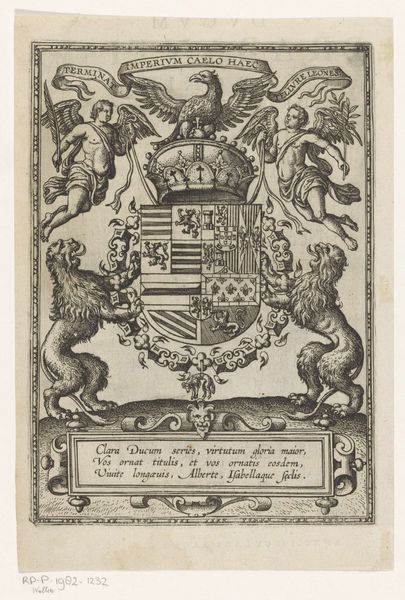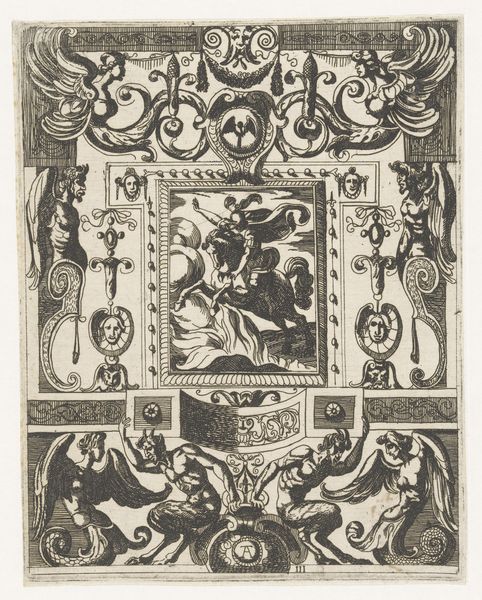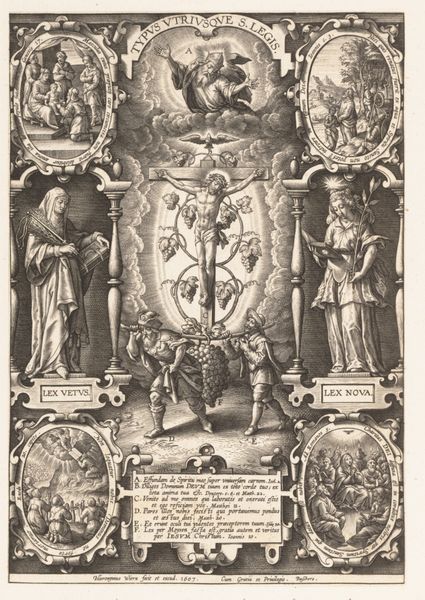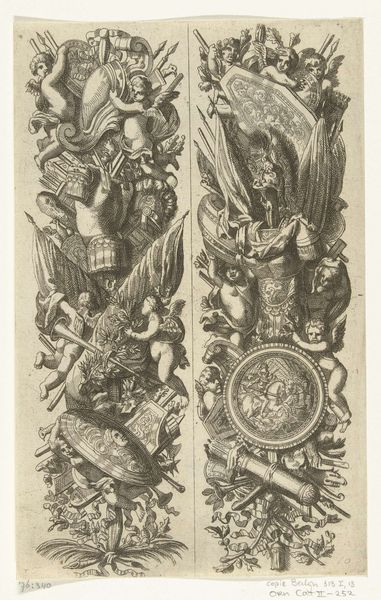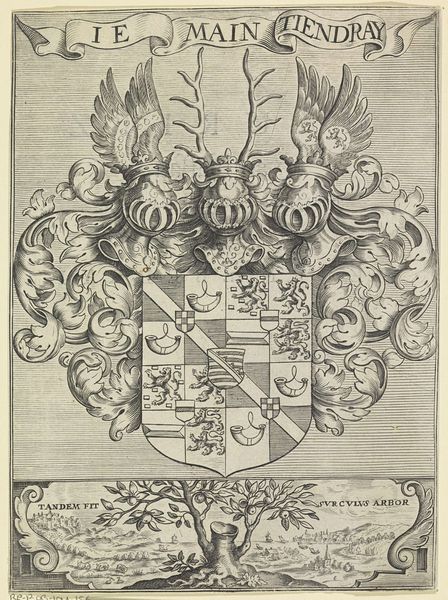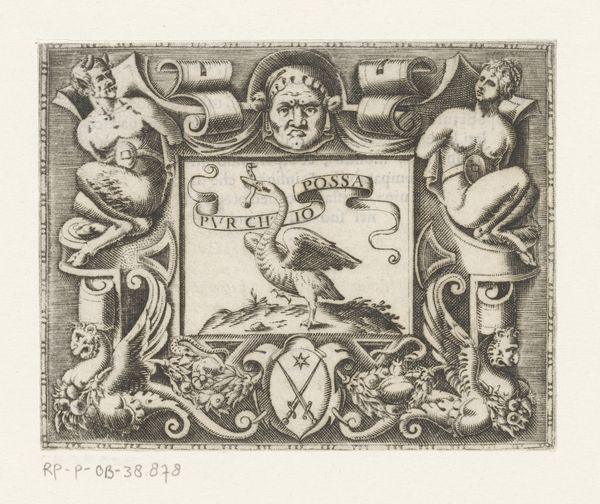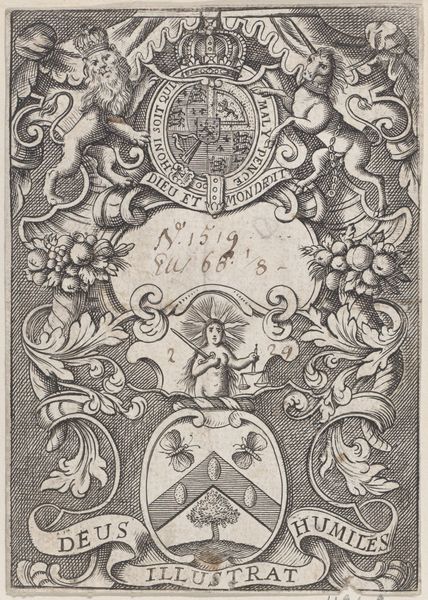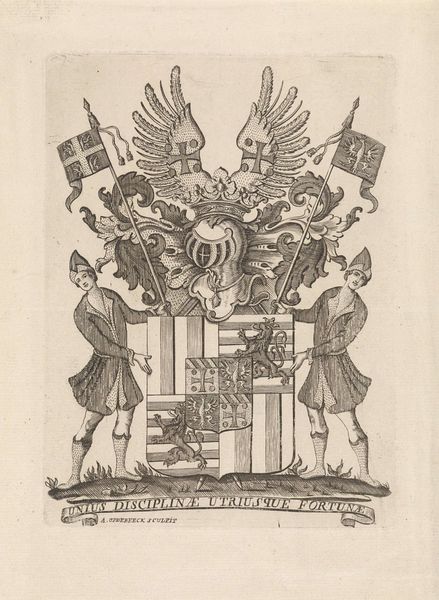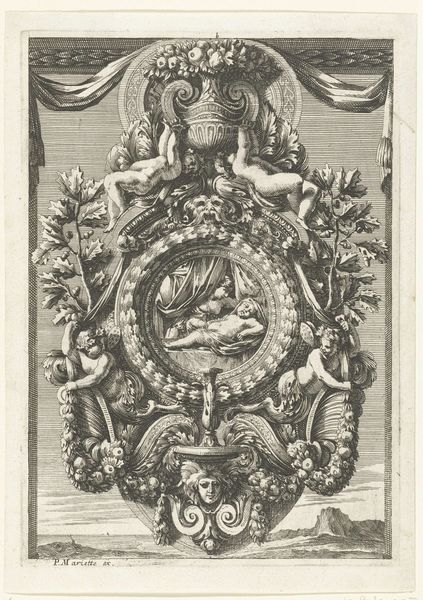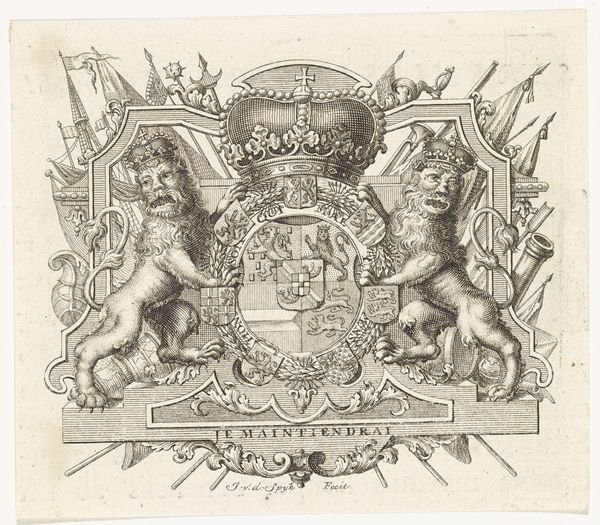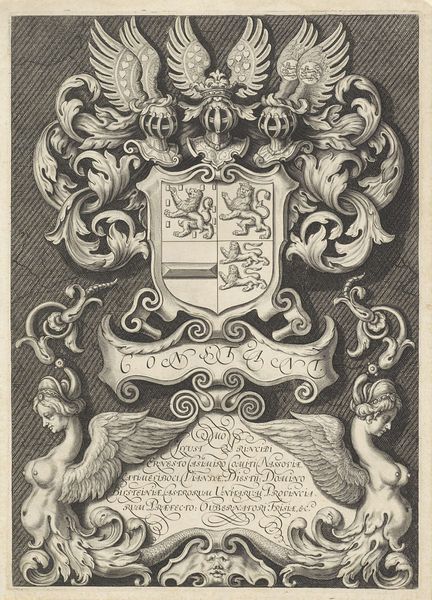
graphic-art, print, embossing, engraving
#
graphic-art
#
medieval
#
pen drawing
# print
#
old engraving style
#
figuration
#
11_renaissance
#
embossing
#
geometric
#
history-painting
#
engraving
Dimensions: height 155 mm, width 121 mm
Copyright: Rijks Museum: Open Domain
Editor: Here we have Abraham de Bruyn's "Wapenschilden," made in 1577. It's a black and white print featuring a series of heraldic shields. It has a very formal, almost austere feel to it. What stories do you think it tells? Curator: This piece speaks volumes about power, lineage, and identity in the late 16th century. Heraldry was never simply decorative; it was a visual language of social hierarchy, political alliance, and ownership. The arrangement and details of these "Wapenschilden" offer insights into the complex web of relationships within European aristocracy. Editor: So, it's not just art for art's sake? Curator: Absolutely not. Consider who this piece was intended for. Likely, it was circulated amongst a very specific, elite group who understood the nuances of each coat of arms. Who controlled the means of visual production, and whose stories were deemed worthy of preservation through printmaking? How do we analyze such seemingly 'simple' geometric configuration to discover which families were elevated and why? Editor: I see what you mean. The symbols tell of societal structures, what the elite value, who has power. Is that why there are cherubs mixed with eagles, crosses, and lions? Curator: Precisely. Those classical, religious, and mythological images were intentionally placed there for rhetorical flourish, imbuing authority, virtue, and divine right onto earthly, ruling houses. De Bruyn's image can also provide insights into gender dynamics. Are certain familial lines elevated above others? Do female members receive the same heraldic representation? These details offer further dimensions to our interpretation of this era's power structures. Editor: So by analyzing something like this, we can unravel more about power structures of the time? Curator: Exactly! Analyzing this print allows us to connect art history to gender studies, cultural studies, and even political science. The questions this image raises speak directly to larger contemporary dialogues surrounding inequality and identity. Editor: I never thought a heraldic image could be so politically charged. I guess there's so much more than meets the eye at first glance! Curator: Indeed. And by critically examining the image's context, we can find resonance within its narratives to question present social and political hierarchies, too.
Comments
No comments
Be the first to comment and join the conversation on the ultimate creative platform.
